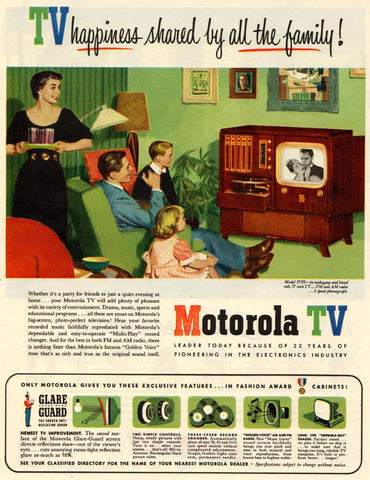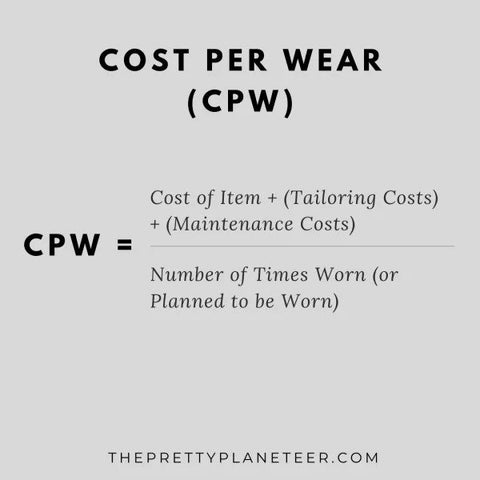How did minimalism come into play?
Minimalistic lifestyle have became trendy in the recent years. It means to declutter one’s life, only doing and keeping things that are truly important. The opposite, consumerism culture, has become increasingly overwhelming. For a long time, our society has been slowly persuaded to mindlessly consume and spend. After World War One, production in the US was 12 times greater than it was in 1860. At the end of World War Two, consumerism became evident.

The economic recovery after the war and The Great Depression created a stark contrast in lifestyle, and made people experience an abundance of materials and resources. It was also during the 1940s to 50s when radio and television became a common household appliance. Companies used this opportunity to show commercials to push consumerism further.

Picture credit: vintag.es
In the modern society, pop culture and the rise of social media dramatically changed our way of life and thinking. Movies and TV depicting lavish lifestyles, ads convincing us their product will fix our problems, and influencers on social media showing off expensive things they own. Subconsciously, we slowly buy into these values. We’ve come to believe our possessions determine how we’re perceived, and if we want to fit in, we’ll always need that shiny new product.
Then, in 2020, the pandemic hit the world. We stayed at home in fear, anxious about the future. Uncertainty engulfed us. Global disasters that damage our quality of life often forces us to reflect and reevaluate our choices. What do we really need? Does all the stuff in my home make me happy? What do I want to do? And with those questions in mind, FIBFLX was born.
As opposed to fast fashion brands, we put our emphasis on slow fashion and wearing clothes on repeat. (read about our brand story here) Back in 2007, the term “slow fashion” was coined at the beginning of The Great Recession. Now, once again in the face of adversity, we turn to a simpler way of life and more essentials focused way of dressing.
Redundancy of Choices
Let’s talk about a scenario you’ve probably experienced personally. Before a date or a special occasion, you’re trying to decide what to wear. You’ll try on five different outfits, without really liking any of them, start to think you don’t have enough clothes, and finally deciding on a look you’re not really satisfied with. When faced with decisions, we should have options that are amazing, 10 out of 10, A+. We spend so much of our time trying to make decisions everyday, without realizing it. We decide on what to wear in the morning, what to eat for lunch, what to do in the afternoon. We should try to simplify all that, and focus on things that are really important. Having many options doesn’t mean you have one you really like. Similarly, with your wardrobe, you should try to prioritize quality over quantity.
Cost Per Wear
One way to measure if a purchase is worth its price, is by calculating its CPW (cost per wear). Fast fashion brands’ clothing may be cheap at first sight, but over time, due to its low quality and going out of style, you’ll need to replace it more often. Resulting in you actually spending more money. However, high quality items that are season-less tend to be more expensive, but its cost is brought down over time. Let’s see how this works.

Picture credit: theprettyplaneteer.com
A typical fast fashion brand sweater costs $30, made out of acrylic, polyester, or nylon, which are all synthetic materials. If you keep it for a whole season (3 months), and wear it once a week, the cost per wear is $2.5. However, if you invest in FIBFLX’s cashmere and merino wool sweater, although the cost per wear for a season is $5.8, our sweater are for keeps. In three seasons, you’ll bring the cost per wear down to $1.9. On top of that, wearing natural fabrics such as wool and cashmere not only feels good for your skin, but it’s more sustainable for our environment.
Let’s talk about another one of our favourite sweaters, the merino wool mock neck sweater. It’s super budget friendly, and its CPW for three seasons is only $1.38. Even if you choose to invest in a super luxurious pure cashmere sweater, like our 100% cashmere boat neck sweater, the CPW for a full year if only $2.29. Realistically, we know you’ll love our luxe sweaters for way more than a year, which can bring down the cost even more.

Limited but Amazing Choices
Having staple pieces with timeless designs that don’t follow the trend means you can wear them year after year. And with our premium quality fabrics, they’ll always make you feel nice and cozy. Having limited, but amazing, options in your closet also means less time wasted on trying to make decisions. So you can spend time on what truly makes you happy. Minimalistic lifestyle is never about giving up materialistic possessions just for the sake of it. But instead, it stands for only focusing on things that matter.










































